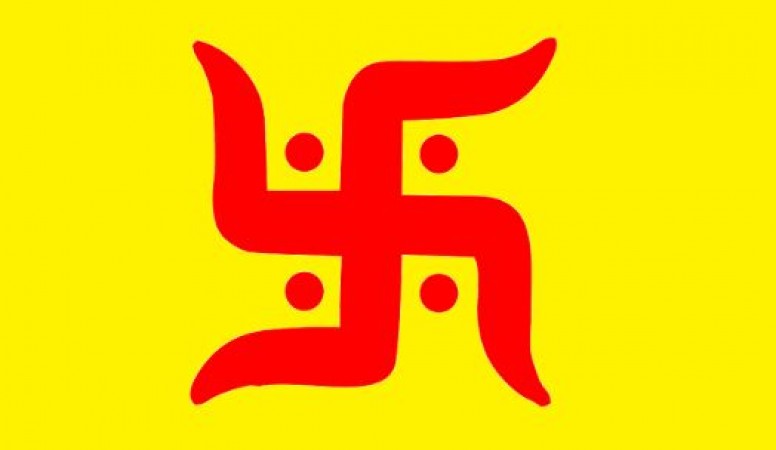
The Swastika, an ancient symbol with profound roots in Hinduism, is a representation of cosmic harmony, prosperity, and spiritual well-being. Embraced as a sacred emblem for millennia, the Swastika holds significant cultural and religious value in Hindu traditions. This article delves into the spiritual significance of the Swastika, its historical origins, and its enduring place in Hinduism.
Historical Origins:
The Swastika is an ancient symbol that predates Hinduism and has been found in various cultures across the globe. In Hinduism, it is believed that the symbol originated thousands of years ago and was regarded as a mark of well-being and prosperity. The term 'Swastika' is derived from the Sanskrit word 'Swasti,' which translates to "auspiciousness" or "good fortune."
Symbolism of Swastika:
The Swastika is typically depicted as a cross with four arms that are bent at right angles. It can be clockwise or counterclockwise, known as the "right-facing" and "left-facing" Swastikas, respectively. In Hinduism, the right-facing Swastika is more commonly used and is associated with positive energies and blessings.
Representation of Cosmic Harmony:
The four arms of the Swastika represent the four cardinal directions - North, South, East, and West. This symbolism embodies the idea of cosmic harmony and balance, suggesting that the universe operates in perfect order under the divine guidance of higher forces.
A Symbol of Good Fortune:
In Hindu culture, the Swastika is often drawn on doors, thresholds, and objects to invoke blessings and good luck. It is believed to bring prosperity, success, and protection from negative influences. The Swastika also acts as a talisman to ward off evil and negative energies.
Religious Significance:
In Hindu religious rituals and ceremonies, the Swastika is drawn or engraved on various items, including idols, offerings, and religious texts. It is a prominent symbol used during Hindu weddings, festivals, and sacred events to invoke the blessings of the deities and ensure the overall auspiciousness of the occasion.
Connection to Lord Ganesha:
The Swastika holds a special connection with Lord Ganesha, the beloved elephant-headed deity and the remover of obstacles. In many depictions, Lord Ganesha is seen with a Swastika drawn on his palm, symbolizing the divine blessings of well-being and protection.
Misappropriation and Cultural Sensitivity:
Despite its deep-rooted significance in Hinduism, the Swastika has faced unfortunate misappropriation in modern history. Its association with negative ideologies during the mid-20th century has led to its misinterpretation in certain contexts. It is essential to understand the distinction between the Swastika used in Hinduism and its misuse in other cultural contexts.
The Swastika, a sacred symbol in Hinduism, represents a profound amalgamation of cosmic harmony, well-being, and prosperity. Its auspicious presence in religious ceremonies, homes, and festivities emphasizes its significance as a symbol of divine blessings and positive energies. As an emblem of cultural and spiritual heritage, the Swastika remains a powerful reminder of the rich tapestry of Hindu traditions and their enduring impact on the world.
These are the five famous caves of Lord Shiva, that you should visit in Sawan
The Exploration of Morality in "Crime and Punishment" by Fyodor Dostoevsky